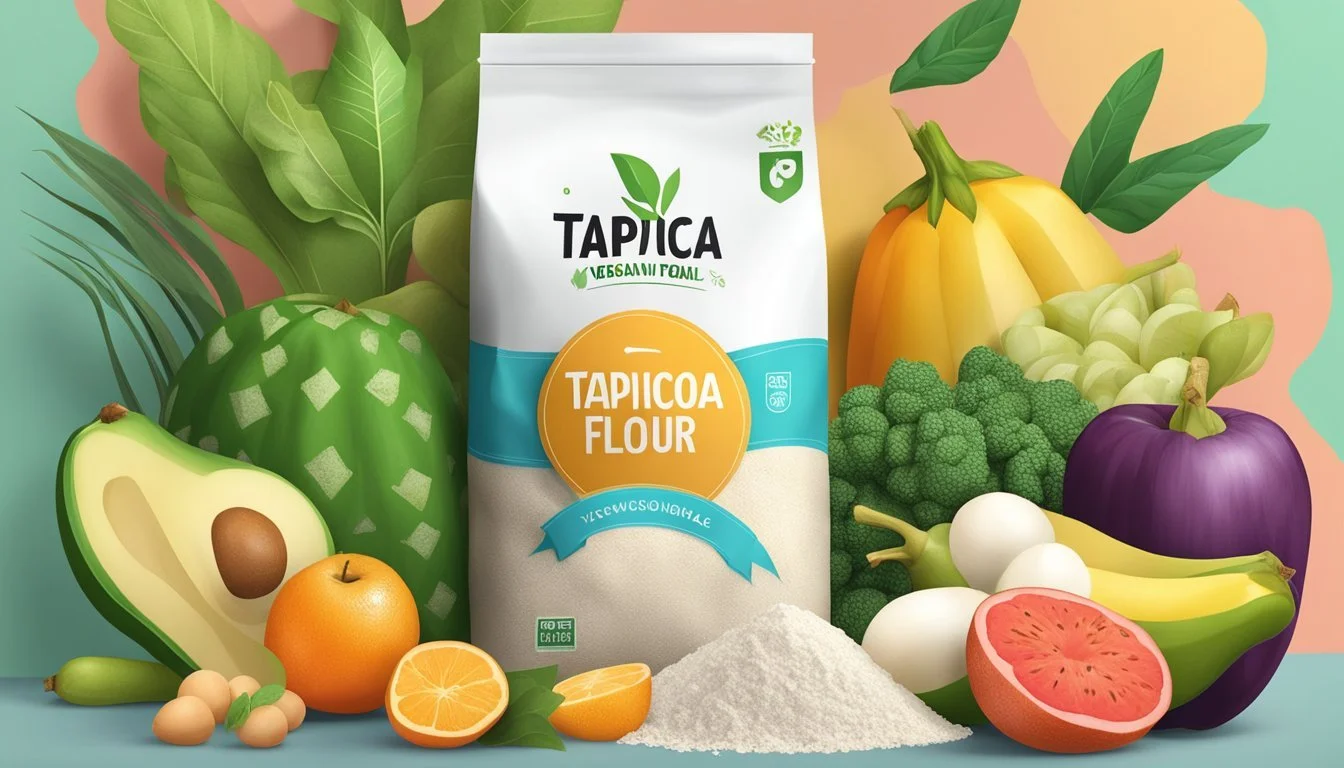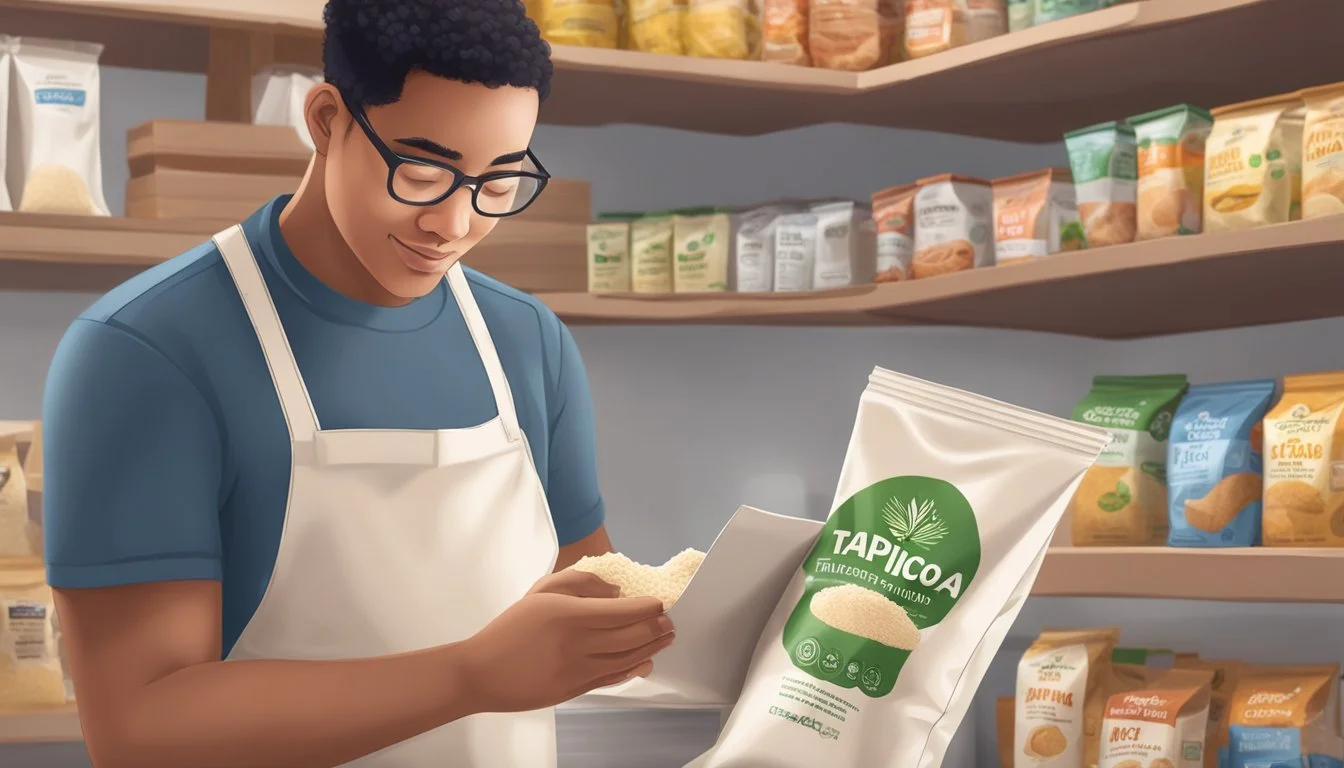Is Tapioca Flour Vegan?
Unveiling the Plant-Based Truth
Tapioca flour is a fine, white powder derived from the cassava root, a staple food originally from South America. As a plant-based product, it firmly falls into the category of vegan ingredients, suitable for individuals following a plant-based diet. The flour is gaining popularity in vegan cooking and baking thanks to its versatile properties, which make it an excellent thickener and binding agent in a variety of recipes.
While tapioca flour is fundamentally vegan, the broader question of whether particular tapioca-based products are vegan depends on their other ingredients. Tapioca flour itself is free from animal products, but when incorporated into prepared foods like tapioca pudding or processed vegan cheeses, the presence of non-vegan components such as dairy or eggs would render the final product unsuitable for vegans. It's always advisable for those adhering to a vegan lifestyle to inspect the full ingredient list of any tapioca-containing products to ensure compliance with their dietary choices.
In culinary applications, tapioca flour serves as a coagulant in vegan egg substitute products and is also employed as a gluten-free alternative to wheat flour. Despite its similarities to tapioca starch, tapioca flour comes from the entire cassava root, resulting in a product with slightly different nutritional content and consistency. Nevertheless, both tapioca flour and tapioca starch share the characteristic of being inherently vegan-friendly.
Understanding Tapioca Flour
Tapioca flour is a fine, white powder utilized in cooking and baking, representing a distinct product with origins in South America. This section will delve into its origin, its comparison to tapioca starch, and its manufacturing process.
Origin of Tapioca
Tapioca is derived from the cassava root, which is a staple in Brazil and other South American countries. Cassava, also known as yuca or manioc, is a plant that thrives in tropical climates and is essential to the diets of millions of people in these regions.
Tapioca Flour vs. Tapioca Starch
While both tapioca flour and tapioca starch come from the cassava root, they differ slightly in their production and characteristics:
Tapioca Starch: Generally refers to a more refined product, focusing on the starchy content of the cassava root.
Tapioca Flour: While similar in texture and appearance to the starch, tapioca flour is made from the whole root, containing more fiber and overall nutrients.
Manufacturing Process
The process of making tapioca flour involves several steps:
Harvesting: The cassava root is harvested from farms typically located in South America.
Washing and Peeling: The roots are then thoroughly washed and peeled to remove any dirt or outer skin.
Grinding: The cleaned cassava roots are ground into a pulp.
Drying: This pulp is subsequently dried until it reaches a powdery consistency; at this point, it is referred to as tapioca flour.
Sifting: The flour is sifted to achieve a fine, smooth texture suitable for culinary use.
The processing of cassava into tapioca flour ensures that it remains a purely plant-based ingredient, maintaining its status as a vegan-friendly food product.
Tapioca Flour in Vegan Cooking
Tapioca flour is a staple in vegan kitchens, prized for its versatility in recipes and its gluten-free quality. This section sheds light on its roles and applications, emphasizing its plant-based origins and absence of animal products, ensuring suitability for those following veganism.
Role in Vegan Recipes
Tapioca flour serves as a critical ingredient in vegan cuisine, particularly for imparting a desirable texture to a variety of baked goods. Unlike traditional flours that may require eggs for binding, tapioca flour naturally binds vegan recipe components, making it essential in preparing vegan bread, pastries, and desserts. It ensures cohesion without the need for animal products, thus maintaining the integrity of plant-based meals.
Vegan Alternative to Dairy and Eggs
In veganism, avoiding dairy and eggs is paramount. Tapioca flour enters as a hero, often used in vegan cheeses to achieve the sought-after creamy consistency and in puddings as a thickening agent. It replaces gelatin—a non-vegan ingredient—in recipes, offering a similar texture while adhering to vegan standards. Its role isn't limited to mimicking the function of dairy and eggs, but it also contributes vital protein content to vegan diets.
Gluten-Free Vegan Baking
For gluten-free vegan baking, tapioca flour is invaluable. Its absence of gluten makes it a safe constituent in gluten-free bread and other gluten-free vegan baked goods. It enhances the structure and texture of gluten-free recipes, making it possible to create enjoyable, allergy-friendly vegan treats. By substituting gluten-containing flours with tapioca, it resolves both dietary restrictions and ethical considerations in one swoop.
Culinary Applications of Tapioca Flour
Tapioca flour, derived from the cassava plant, is a versatile ingredient in the culinary world, primarily used for its thickening properties and contribution to gluten-free recipes. Its neutral taste and smooth texture make it ideal for a range of cooking and baking applications.
Thickening Soups and Sauces
In cooking, chefs frequently rely on tapioca flour as a thickening agent for soups and sauces. Unlike other thickeners, it imparts a glossy finish without a cloudy residue, ensuring the visual appeal of dishes remains intact. When using tapioca flour, it is typically mixed with a cool liquid before being added to hot dishes to prevent clumping.
Example for Soups: Chicken soup can gain a silkier consistency with a tablespoon of tapioca flour mixed with water.
Example for Sauces: A berry compote can be thickened with a sprinkle of tapioca flour to enhance its texture without altering the flavor.
Creating Breads and Cakes
Those in search of gluten-free baking alternatives often turn to tapioca flour. It adds the necessary elasticity and structure to baked goods that might otherwise be lost when omitting gluten.
Breads: When combined with other gluten-free flours, it helps produce a desirable texture in bread recipes, such as in a gluten-free sourdough.
Cakes: Tapioca flour contributes to a light and fluffy cake crumb and is often found in recipes alongside chocolate or vanilla extract.
Desserts and Sweet Treats
Tapioca flour is a primary ingredient in various desserts, most notably in tapioca pudding, where it acts as a thickener providing a unique texture. Desserts like fruit pies benefit from its thickening capabilities, especially when incorporating berries, as it creates a stable filling.
Tapioca Pudding: Made with tapioca pearls, milk or coconut milk, and sweeteners, tapioca pudding is often enhanced with vanilla extract and cinnamon.
Bubble Tea: Tapioca pearls, prepared with tapioca flour, are a key component in bubble tea, also known as boba tea. These pearls add a chewy contrast to the sweet, milky flavors of the drink.
Potentials and Considerations of Tapioca Flour
In evaluating tapioca flour, consumers often weigh its nutritional aspects and health implications. This section examines tapioca flour's nutritional profile, dietary benefits, and potential health concerns to provide a comprehensive view.
Nutritional Profile
Tapioca flour is primarily composed of carbohydrates, with minimal protein or fat content. It is a grain-free starch, which makes it suitable for a gluten-free diet, helping individuals with celiac disease. While it isn't a significant source of vitamins or minerals, its carbohydrate nature makes it a quick source of energy.
Dietary Benefits
Being plant-based, tapioca flour is an excellent option for those following a vegan diet. It is a versatile ingredient, often used in combination with coconut milk in vegan recipes to provide a creamy texture without the use of any animal products. Additionally, tapioca flour fits into a paleo diet as it is free from grains and processed sugar, though it should be consumed in moderation due to its carbohydrate density.
Diet Type Compatibility with Tapioca Flour Vegan High compatibility Gluten-Free Suitable Paleo Suitable in moderation Grain-Free Diets Ideal fit
Possible Health Concerns
Though tapioca flour offers dietary flexibility, it lacks substantive nutritional value, which may lead to deficiencies if it heavily replaces other more nutrient-dense flours. Overconsumption of high-carbohydrate, low-nutrient foods like tapioca can contribute to weight gain and related conditions such as heart disease. Furthermore, if not processed properly, the cassava plant can contain compounds that convert to cyanide and pose a risk of cyanide poisoning. It's also important to note that many processed vegan foods that utilize tapioca flour may contain high levels of saturated fat and sugar, which detract from its health benefits.
Alternatives and Substitutes
When considering vegan alternatives to tapioca flour, it is crucial to evaluate how well each substitute can perform in terms of binding, coagulation, and texture. Each starch has its own unique properties that can affect the outcome of a recipe.
Comparing Tapioca with Other Starches
Tapioca Flour is a starch extracted from the cassava root. It is known for its binding qualities and is often used as a thickening agent in cooking and baking.
Cornstarch: A common thickener with a similar texture to tapioca. It's powerful as a thickener but can contribute to a slightly different texture.
Potato Starch: Has a fine texture and is also a good thickener. It's best used in recipes requiring a light, airy texture.
Vegan Substitutes for Tapioca Flour
When looking for a vegan substitute for tapioca flour, one should consider that the alternative must be dairy-free and egg-free. Here are suitable options:
Arrowroot Starch: Derived from the arrowroot plant, it serves as an excellent thickener and suits various vegan recipes.
Cassava Flour: More fibrous and nutrient-dense, it is made from the entire cassava root, unlike the more refined tapioca flour.
For those maintaining a vegetarian or vegan diet, these substitutes offer the absence of non-vegan ingredients and ensure that the integrity of a plant-based diet is preserved while cooking or baking.
Shopping for Tapioca Flour
When seeking tapioca flour, consumers focus on availability in retail spaces and clarity in product labeling. This vital ingredient is known for its versatility in plant-based cooking.
Finding Tapioca Flour in Stores
Tapioca flour, also referred to as tapioca starch, is predominantly found in health food sections or special diet aisles due to its status as a staple food for gluten-free diets. Major retailers such as Walmart and digital marketplaces like Amazon facilitate easy acquisition of this product. Consumers might also discover it in the baking supplies aisle. Brands such as Bob’s Red Mill and distributors of small pearl tapioca commonly supply tapioca flour in various sizes, ranging from small packets to bulk bags.
Popular Retailers:
Health food stores
Supermarkets (gluten-free section)
Online marketplaces (e.g., Amazon)
Well-Known Brands:
Bob’s Red Mill
Arrowhead Mills
Anthony's Organic
Reading Labels and Identifying Additives
When purchasing tapioca flour, consumers should examine the ingredient list carefully. Pure tapioca flour should list only tapioca starch as its ingredient. Sometimes, tapioca flour can be present in processed foods, where it acts as a thickening agent. However, it's essential to watch for additives that may be included for various purposes, such as preservatives or additional flavorings.
Label Checklist:
Tapioca starch/flour: should be the sole ingredient.
Certifications: Labels like Certified Gluten-Free or Vegan Verified offer assurance about the product's purity.
Avoid products with unfamiliar additives, ensuring the tapioca flour is unmodified.
Upon inspection, if the ingredient list contains more than tapioca starch, or if the labeling is not clear about additives, consumers should consider opting for a different brand or making inquiries with the manufacturer for clarification.





